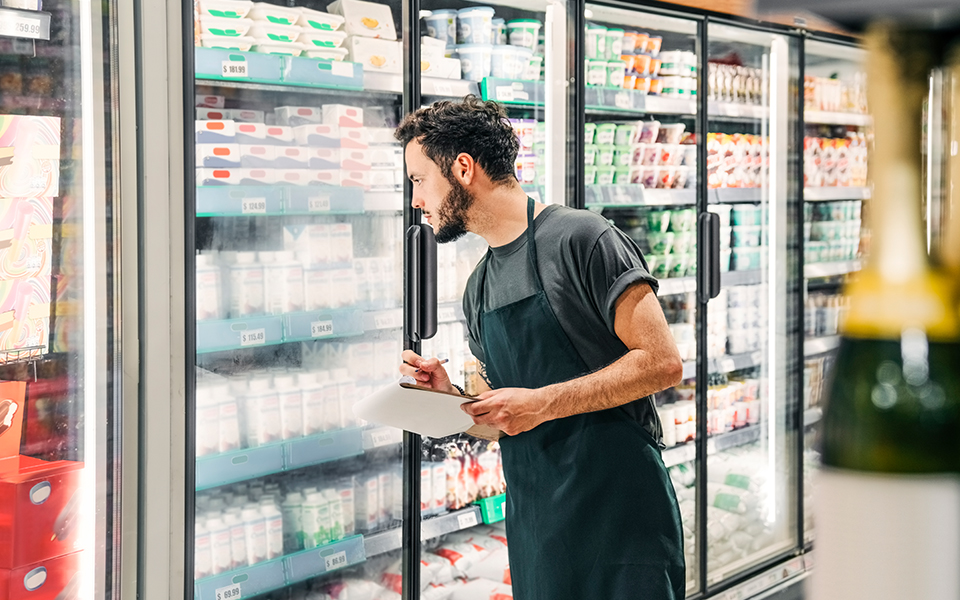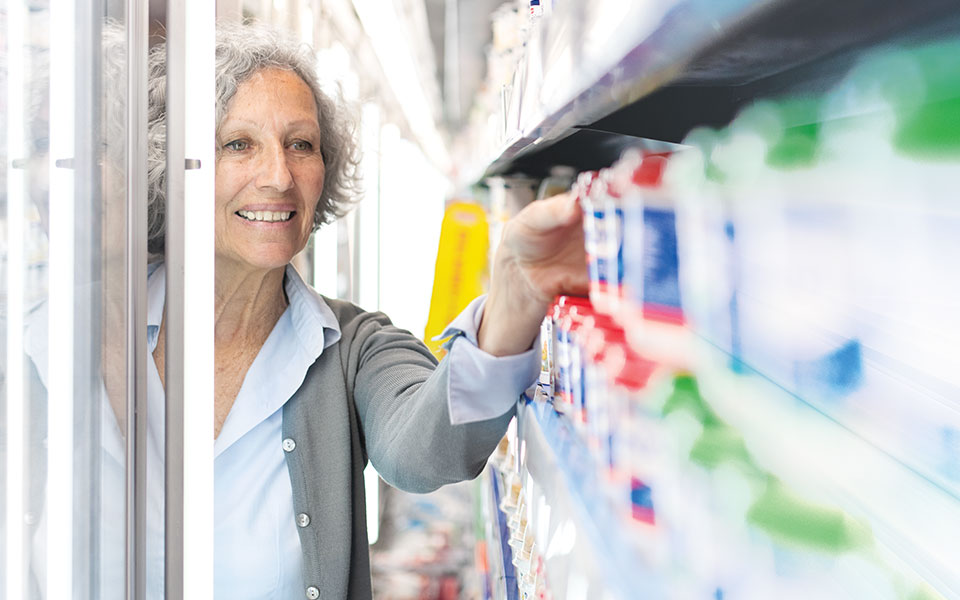*On June 1, 2023 Emerson’s Climate Technologies business became a new standalone company – Copeland. Though our name has changed, we are building on more than a century of HVACR innovation and industry leadership, and Copeland continues to offer the same products, industry stewardship, and learning opportunities you’ve grown to trust. Information found on this webpage posted before June 1, 2023 may contain our old name or branding, but you can be at ease knowing it was created with the knowledge and expertise of Copeland.

Market drivers and refrigerant regulations in recent years have placed an increased focus on sustainability for large-format retailers. Among the natural refrigerant alternatives suitable for these centralized applications, CO2 (or refrigerant name R-744) leads the pack. Offering zero ozone depletion potential (ODP) and a global warming potential (GWP) of 1, CO2 is often considered the benchmark for environmentally friendly refrigerants. In terms of customer-facing peace of mind, CO2 has neither the flammability nor toxicity challenges posed by other natural refrigerant alternatives. And, as energy efficiencies and the reliability of CO2 refrigeration systems rise, system costs have fallen to levels typically found in traditional hydrofluorocarbon (HFC) systems.
Increasing global CO2 adoption
For all these reasons, CO2 has become the preferred natural refrigerant option for large-format food retailers. A recent Shecco study1 on CO2 adoption confirms this trend, showing a growing number of CO2 transcritical stores worldwide:
-
- Canada: 150+
- United States: 260+
- Japan: 2,400+
- Europe: 9,000
The number of CO2 stores in the E.U., Norway and Switzerland has tripled in the last three years, representing 8 percent of the overall food retail market share in these regions. In North America, retailers are still in an experimental “trial” phase to see how CO2 — and other natural refrigerants for that matter — can be used in their facilities and across varying climatic zones.
As older systems age and require upgrading or replacement, many large-format food retailers will be seizing the opportunity to transition from higher-GWP, HFC refrigeration architectures to lower-GWP systems. This trend toward eco-friendly refrigeration is being driven by multiple forces: 1) global regulatory efforts to phase down HFCs; 2) industry organizations like the Consumer Goods Forum that advocate the use of these systems; and 3) many retailers are stating corporate sustainability objectives.
Economies of scale reduce operating costs
The steady increase in global CO2 refrigeration adoption has led equipment and component manufacturers to not only increase production, but also make continued investments in research and development to refine CO2 technologies. These economies of scale are helping to lower CO2 system costs and reduce complexities for end users and service technicians alike.
CO2 training — both formal and hands-on types — has greatly improved as the industry becomes much more familiar with CO2 architectures and performance characteristics. Even refrigeration consultants are becoming well-versed in CO2 systems and can make more educated recommendations.
While the U.S. is still in the early phases of trials and experimentation, every successful implementation increases the likelihood of more stores making the transition to CO2. Safe, environmentally friendly, economical and reliable: CO2 has all the characteristics that make it a candidate as the large-format refrigerant of the future.
Read the full Accelerate America article on the large-format refrigerant of the future [pg.16].

Facility Health Score Insights Program Transforms Enterprise Maintenance
Leveraging refrigeration performance data drives food retail cost reductions. Maintaining proper...

Electrical component considerations for A2L system safety
Electrical component considerations for A2L system safety As a new refrigerant category in the...

A2L refrigerant regulation updates: what you need to know today
Preparing for the approval and safe use of A2Ls in commercial refrigeration applications The move...
